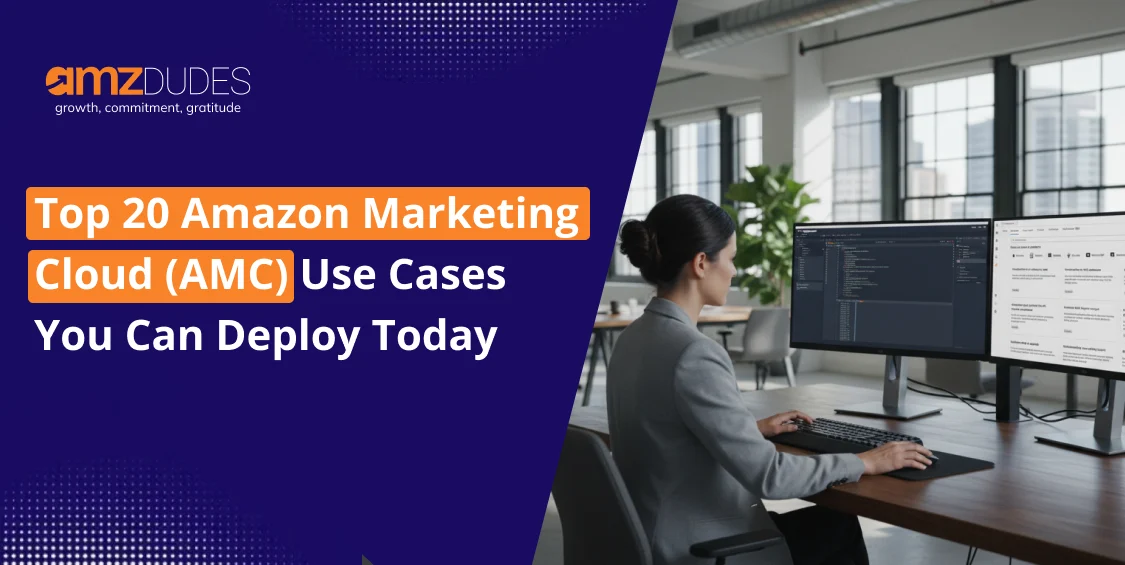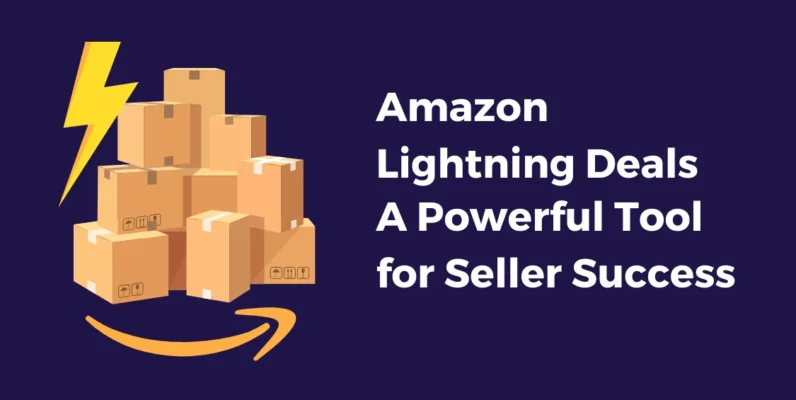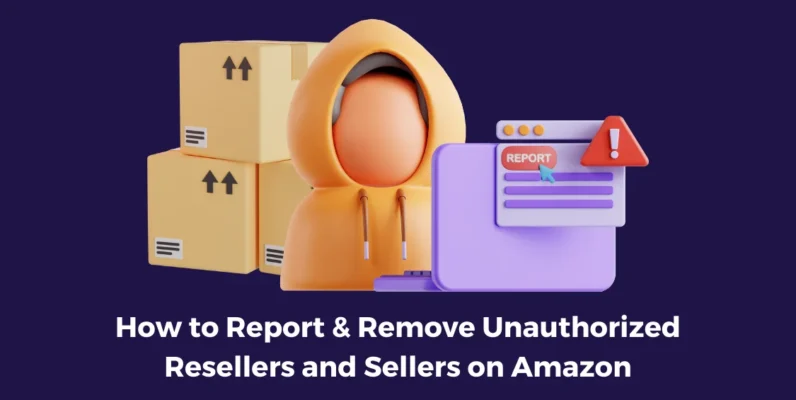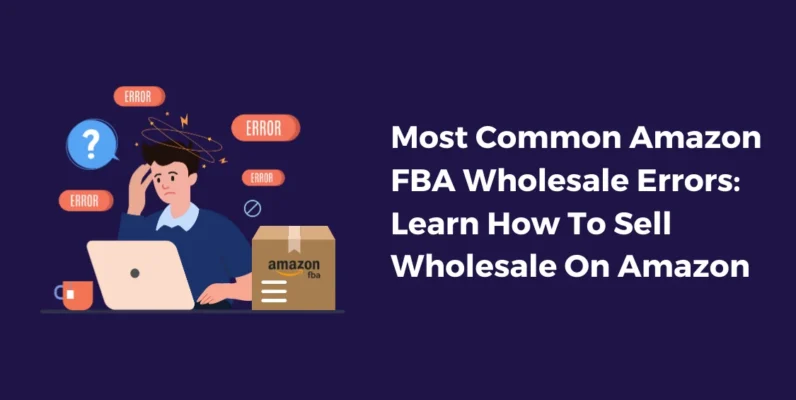Key Takeaways
- Optimize with overlap checks and refreshes: Use Persona Builder to measure overlap and update audiences with rolling lookback windows to maintain performance.
- Match audience to campaign goal: Use cart abandoners for conversion campaigns (SP/SD/DSP) and lookalikes for top-funnel prospecting.
- AMC audiences are actionable: Use SQL to build segments like cart abandoners or high-value buyers and activate them across DSP, Sponsored Products, Brands, and Display.
- Segment precisely to save budget: Filter by recency, intent, or value percentile to avoid wasted impressions and target shoppers most likely to convert.
- Ensure correct audience size: Rule-based audiences need 2,000+ users; lookalikes need 500+. Run COUNT queries to confirm size and prevent failed builds.
If you’ve been running Amazon ads for a while, you’ve probably noticed a frustrating pattern: standard targeting options often spread your budget too thin. You end up paying for impressions that don’t convert, clicks from shoppers who were never really interested, and wasted spend that could have been channeled into high-value customers.
That’s where Amazon Marketing Cloud (AMC) custom audiences come in. Think of them as precision tools for your advertising strategy. Instead of relying on broad, prebuilt Amazon audience segments, AMC gives you the ability to define your own audience rules based on how shoppers actually interact with your ads and products. You can build segments around behaviors like cart abandoners, repeat purchasers, or even the top 5% of customers by sales value.
This article is your step-by-step playbook. We’ll take you from writing a SQL query that defines your audience, to pushing that audience live in your campaigns, to measuring and refining performance over time. Whether you’re new to AMC or looking to scale your audience strategy beyond the basics, you’ll leave with a clear roadmap to creating, deploying, and optimizing custom audiences that drive better targeting and stronger ROI.
What Are AMC Custom Audiences?
Before we dive into building them, let’s get clear on what AMC custom audiences actually are and how they differ from the “standard” insights you might already be familiar with.
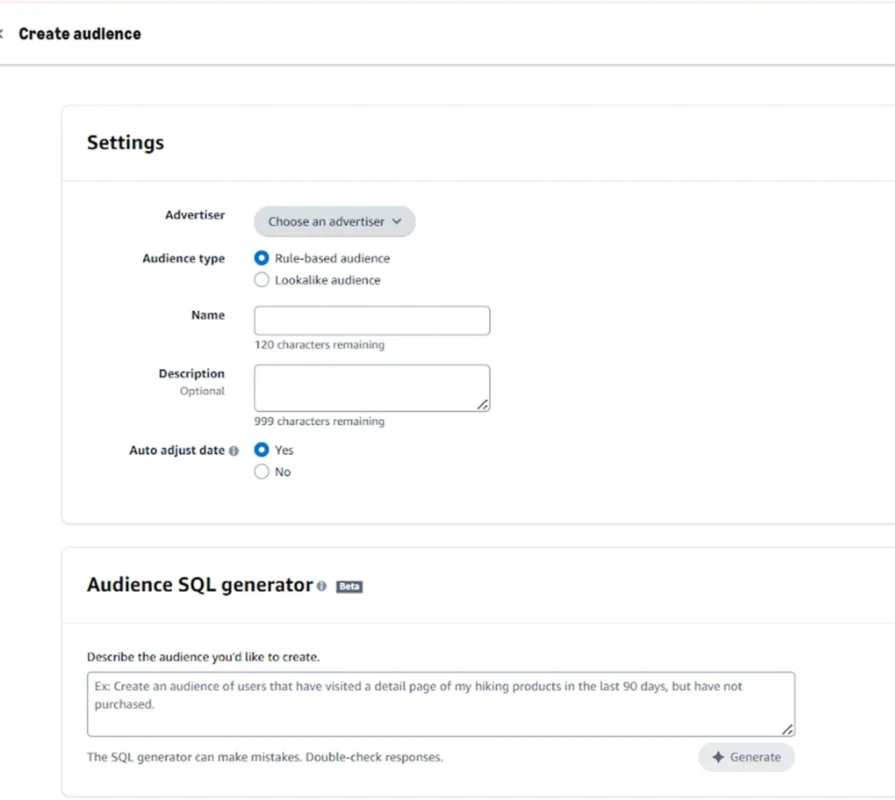
Standard AMC Insights vs. Custom Audiences
When most advertisers first use Amazon Marketing Cloud, they start with insights. You can run queries to learn things like:
- How many shoppers added your product to cart but didn’t buy
- Which ad type introduced a customer vs. which one closed the sale
- How many touchpoints it usually takes before someone converts
These insights are powerful, but they’re diagnostic, they tell you what happened and why it happened. What they don’t do is let you act directly on that data.
That’s where AMC custom audiences change the game. Instead of stopping at insights, you can use similar query logic to build actual audience segments such as lists of shoppers grouped by behavior, recency, or value and you can activate them in your campaigns. In other words: you move from knowing to doing.
Rule-Based Audiences vs. Lookalike Audiences
There are two main ways to build custom audiences in AMC:
- Rule-Based Audiences
These are audiences you define yourself with SQL queries. For example, you could create:
- Shoppers who viewed a product detail page but never purchased
- Customers who bought in the last 90 days but haven’t returned
- The top 10% of spenders on your brand
Rule-based audiences are about precision. You’re setting the rules that decide who gets in and who doesn’t.
- Lookalike Audiences
Sometimes you don’t just want to target the customers you already know, instead you want to find people who resemble them. That’s what lookalikes are for. You can take a seed audience (like your top 5% of purchasers) and let Amazon’s modeling find other shoppers with similar characteristics. Think of it as scaling your best customers without guessing who else might fit the mold.
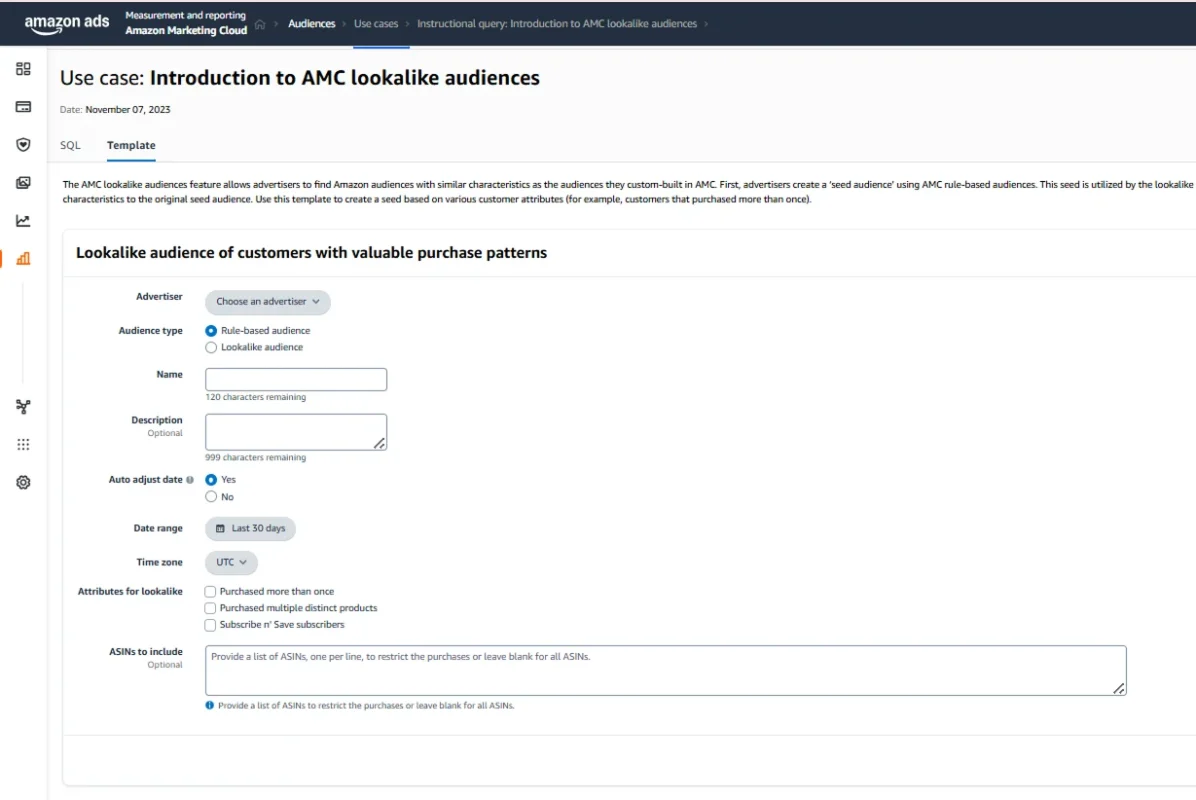
Where They Fit: DSP and Sponsored Ads
One of the biggest advantages of AMC custom audiences is that they’re no longer locked into DSP. You can now activate them across all major Amazon ad types:
Amazon DSP
- Full control over display, video, and OTT placements.
- Best for retargeting or prospecting at scale.
Sponsored Products
- Direct targeting with AMC audiences which is game-changing for closing bottom-funnel shoppers.
- Example: Show Sponsored Product ads only to cart abandoners or lapsed buyers.
Sponsored Brands
Use AMC audiences to bid-boost brand campaigns, keeping your messaging top of mind for high-intent shoppers.
Sponsored Display
- Great for retargeting and win-back campaigns.
- Example: Push loyalty offers to high-value buyers or show reminders to lapsed customers.
AMC custom audiences are the evolution of Amazon targeting. Where AMC once answered “what happened?”, it can now drive “what’s next?” by letting you act directly on your insights.
- Use rule-based audiences for precision.
- Use lookalikes for scale.
- Deploy across DSP and Sponsored Ads to cover the entire funnel.
This is the critical point: AMC custom audiences are no longer just data, they’re actionable levers for better targeting, reduced wasted spend, and smarter campaigns.
Why AMC Custom Audiences Matter for Targeting
Every advertiser wants the same thing from their Amazon ads: more conversions at lower costs. The challenge is that most standard targeting options like in-market audiences, lifestyle categories, or broad contextual targeting are built for scale, not precision. They can bring in traffic, but much of that traffic isn’t ready to buy, which means wasted impressions and wasted spend.
AMC custom audiences flip that equation. By letting you design segments based on actual shopper behavior and performance data, you can focus only on the audiences that are most likely to take action. This level of precision leads to tighter targeting, higher conversion rates, and ultimately better return on ad spend (ROAS).
Precise Audience Segmentation = Reduced Wasted Spend
Think of it this way: would you rather show ads to a million people who might be interested in your product, or 50,000 who’ve already shown signs they’re ready to purchase? AMC custom audiences let you choose the latter which cuts out the noise and honing in on the customers who matter. That means less wasted spend on low-quality impressions and more budget allocated to segments that actually drive revenue.
Real-World Examples of AMC Custom Audiences
Here are just a few ways advertisers are putting this into action:
- Cart Abandoners: Shoppers who added your product to their cart but didn’t check out. Target them with a Sponsored Display campaign to re-engage at the decision point.
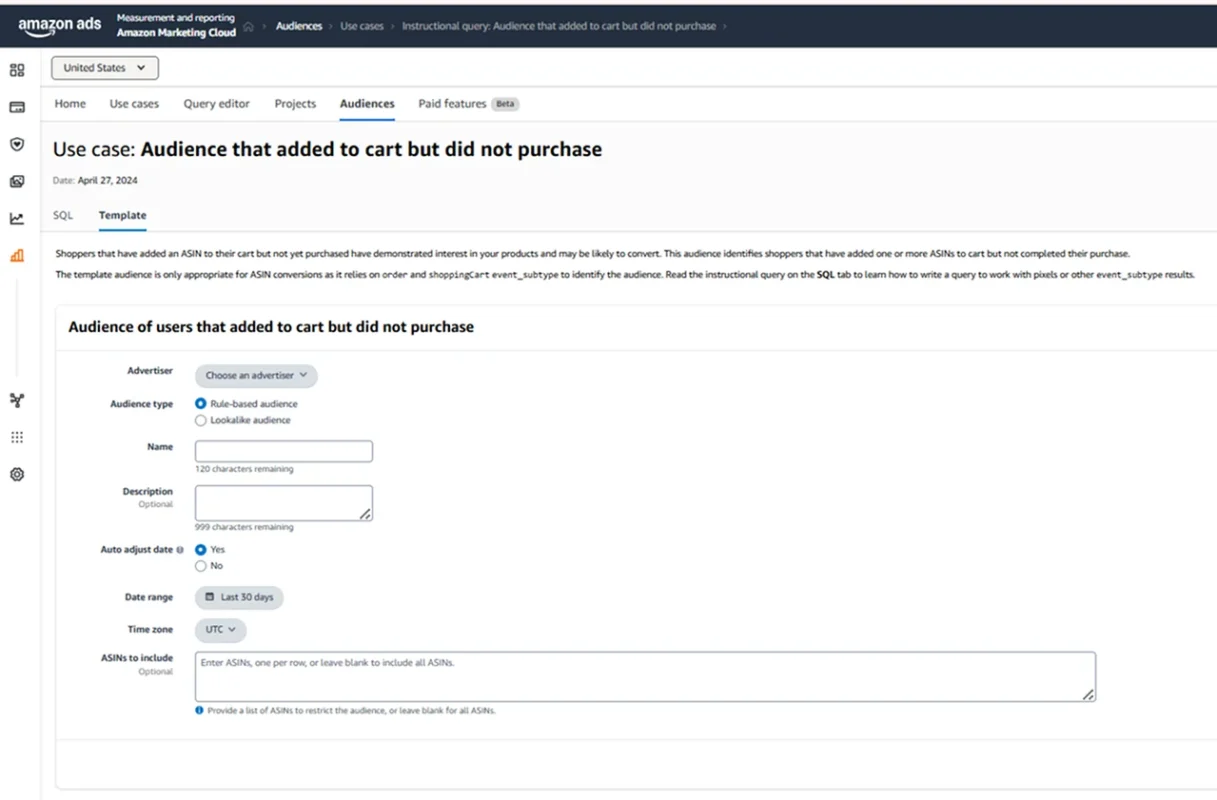
- High-Value Percentile Buyers: Identify the top 10% of your customers by purchase value and build a lookalike audience to scale. Perfect for cross-sells and product launches.
- Prime Video Watchers: Use signals from viewers who engaged with ads on Prime Video to retarget or expand reach into audiences with proven content affinity.
These are not generic groups, they’re custom-built, data-backed segments that align with your business goals.
ROI Benefits vs. Standard Amazon Targeting
The difference shows up where it matters most: performance metrics. With AMC custom audiences, you can expect to see:
- Higher CTRs because ads are shown to people with a demonstrated interest
- Lower ACOS as wasted impressions are cut down
- Better ROAS because your budget is focused on high-intent shoppers
- Stronger long-term LTV when you nurture high-value buyers rather than chasing one-off sales
In short, AMC custom audiences turn targeting from a blunt instrument into a surgical tool—giving you both control and efficiency in how you spend your advertising dollars.
The Data Foundation: What Signals Can You Use?
Before you can build a powerful AMC custom audience, you need to understand the raw ingredients—the data signals that fuel audience creation. Think of these signals as the behavioral breadcrumbs left behind by shoppers as they browse, engage, and purchase across Amazon. The richer the signals you choose, the more precise and effective your targeting will be.
Amazon Ads Events
Every click, impression, and view generated by your Amazon DSP and Sponsored Ads campaigns can be captured in AMC. These events give you visibility into how shoppers interacted with your ads, whether they scrolled past, clicked through, or engaged multiple times across touchpoints. This is the foundation for building audiences like “users who clicked but didn’t convert” or “shoppers exposed to Sponsored Brands but not yet reached by DSP.”
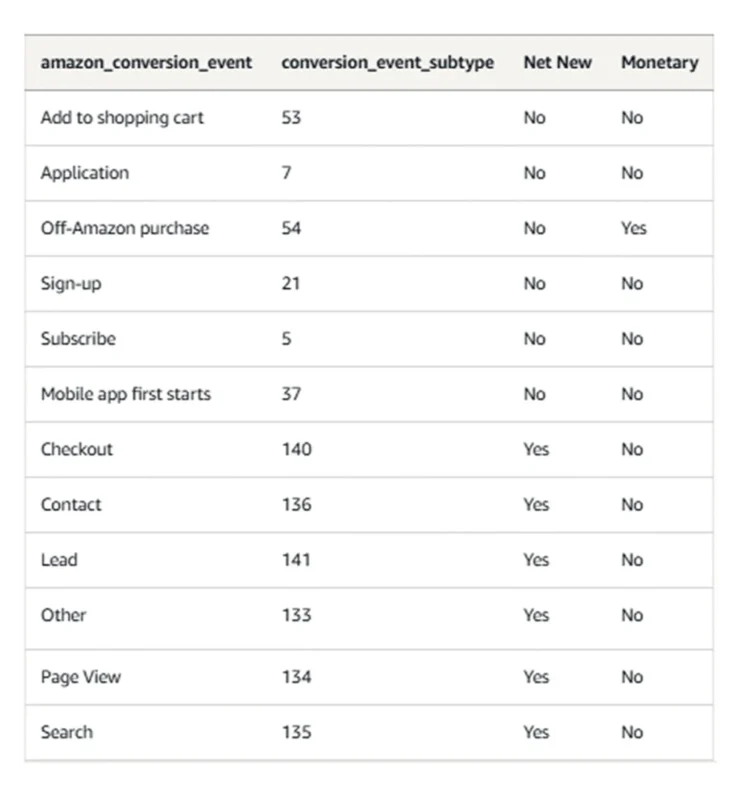
Conversions & Purchase Signals
The strongest indicator of intent is a purchase—or the steps leading up to one. AMC gives you access to conversion events such as:
- Add-to-cart actions
- Detail page views
- Completed purchases
- Repeat orders
By tapping into conversion data, you can segment buyers by recency (purchased in the last 30 days), frequency (repeat vs. one-time buyers), or value (top 10% by spend). These signals are gold for strategies like win-back campaigns or cross-selling into new product lines.
First-Party Uploaded Tables
AMC doesn’t stop at Amazon’s own signals, you can also bring your first-party data into the mix. Think CRM lists, loyalty program members, or newsletter subscribers. By uploading this data, you can:
- Retarget existing customers on Amazon
- Exclude audiences you already engage heavily elsewhere
- Create lookalikes to expand reach beyond your known base
This fusion of off-Amazon and on-Amazon data is where custom audiences become truly unique to your brand.
Paid Features & Enriched Data
Amazon also offers paid data sets that enrich your targeting options:
- In-Market Segments: Shoppers actively browsing or purchasing in your category
- Lifestyle Segments: Broader interest-based groupings (e.g., “fitness enthusiasts”)
- Prime Video Insights: Audiences who have interacted with streaming ads or specific content genres
These layers help you push beyond transactional behavior and capture lifestyle context, giving you a more complete picture of your customer.
Pro Tip: Focus on Quality Signals
When it comes to building custom audiences, not all signals are created equal. To maximize performance, prioritize signals that reflect:
- Recency: shoppers who engaged recently are more likely to convert
- Purchase Intent: actions like add-to-cart or repeat visits show buying signals
- High-Value Percentile Buyers: targeting your top spenders ensures your budget goes toward audiences proven to deliver ROI
By combining these signals thoughtfully, you’ll create AMC custom audiences that are lean, precise, and laser-focused on the customers most likely to move the needle for your brand.
Step-by-Step: How to Create AMC Custom Audiences
Building AMC custom audiences can feel technical, but once you break it down, it follows a repeatable workflow. Let’s walk through the exact steps you’ll take, from defining your use case to activating the audience in live campaigns.
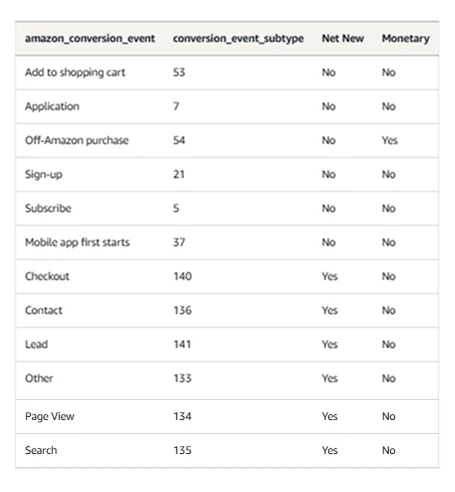
Step 1: Define Your Use Case
The first step isn’t technical, it’s strategic. You need to know what problem you’re solving. So define your use case first.
Examples:
- Cart Abandoners (7D): Reach shoppers who added your product to cart but didn’t check out in the past 7 days.
- High-Value Buyers: Reward the top 10% of your customers with loyalty offers or upsell campaigns.
- Tentpole Event Shoppers: Re-engage Prime Day browsers who didn’t purchase during the event.
Pro tip: Start with one clear use case before trying to build multiple audiences at once.
Step 2: Write Your Query
Custom audiences in AMC are powered by SQL. At its core, every rule-based query must select user IDs, since those are the identifiers that define your audience.
Basic Structure:

Examples:
- Cart Abandoners (7-day window):
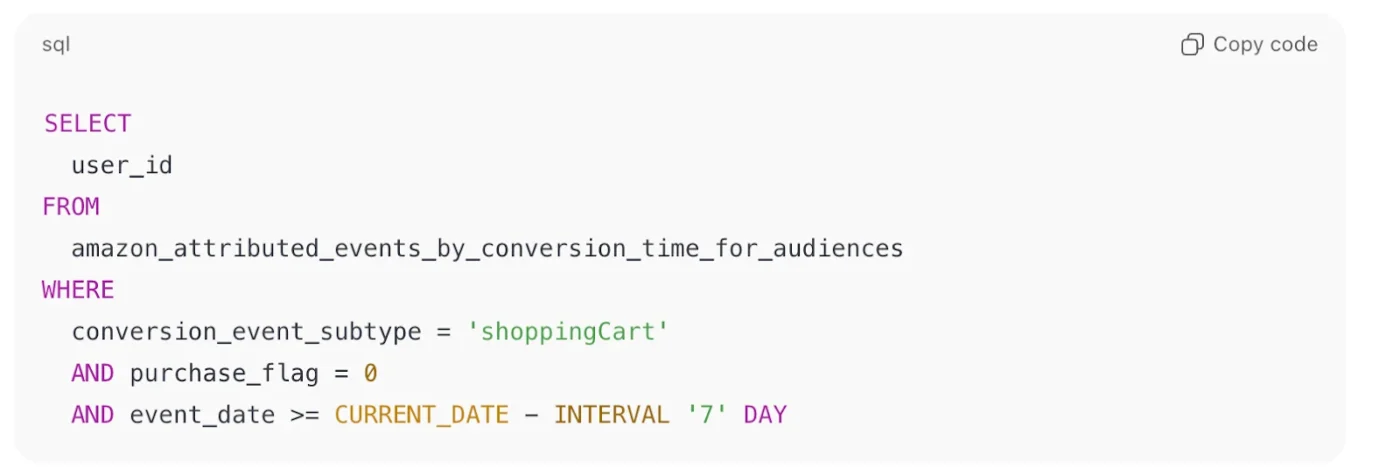
- Top Percentile Buyers:
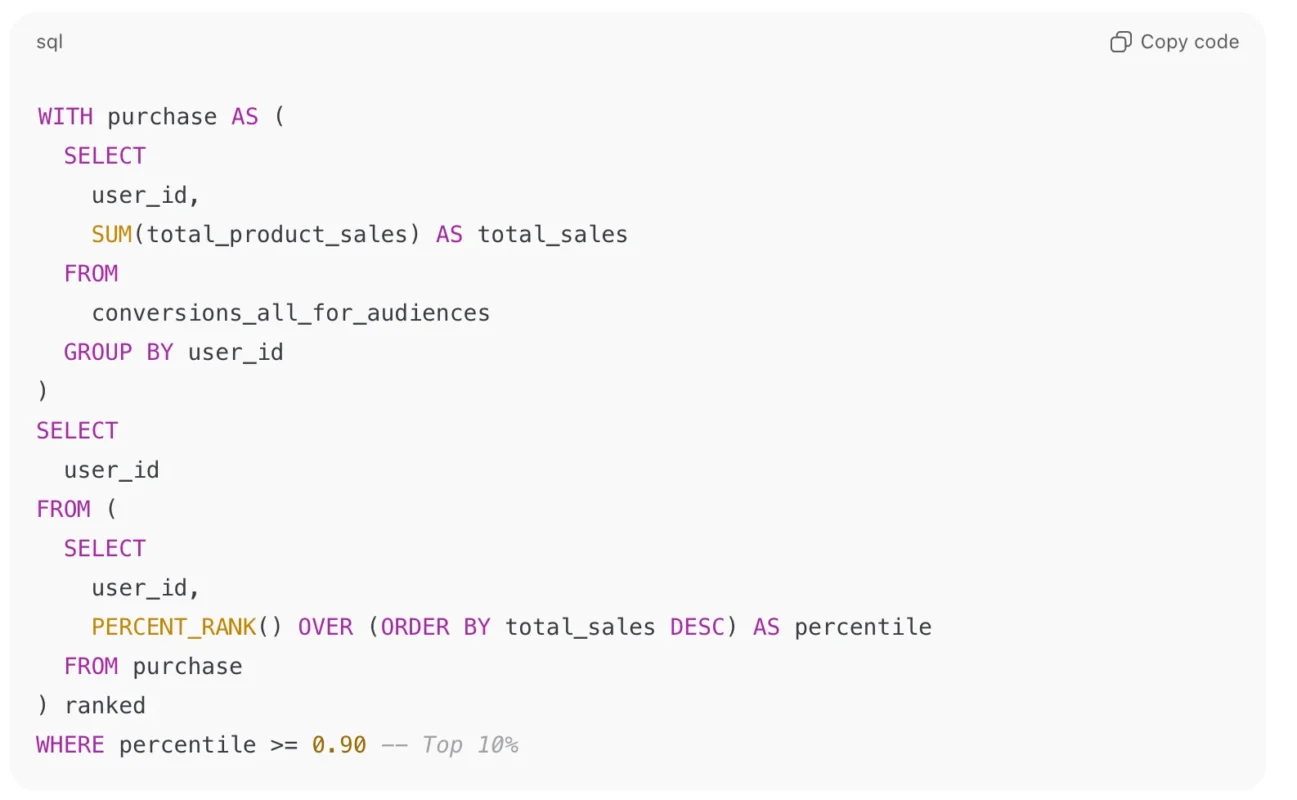
- Tentpole Event Shoppers (Prime Day):

Step 3: Test Audience Size
Even the best query won’t work if your audience is too small.
Thresholds:
- Rule-based audiences require at least 2,000 unique user IDs to activate.
- Lookalike audiences need 500+ users in the seed group.
Why this matters:
- If your audience is too small, the build fails—and you can’t push it into DSP or Sponsored Ads.
- Privacy filters (like opt-outs and under-18 profiles) shrink audiences further, so aim for 2,500+ IDs to be safe.
How to Test Size:
Run a COUNT query before creating the audience:

Critical takeaway: Testing audience size is the #1 step that prevents wasted hours and failed builds. Always check scale before pushing to activation.
If your result is below 2,000, you’ll need to broaden your rules (longer lookback window, more products, or a wider funnel stage).
Step 4: Create the Audience
Once you’re confident in your query, it’s time to submit it using the AMC API. You’ll call the /amc/audiences/query endpoint with a JSON payload.
Sample Request:
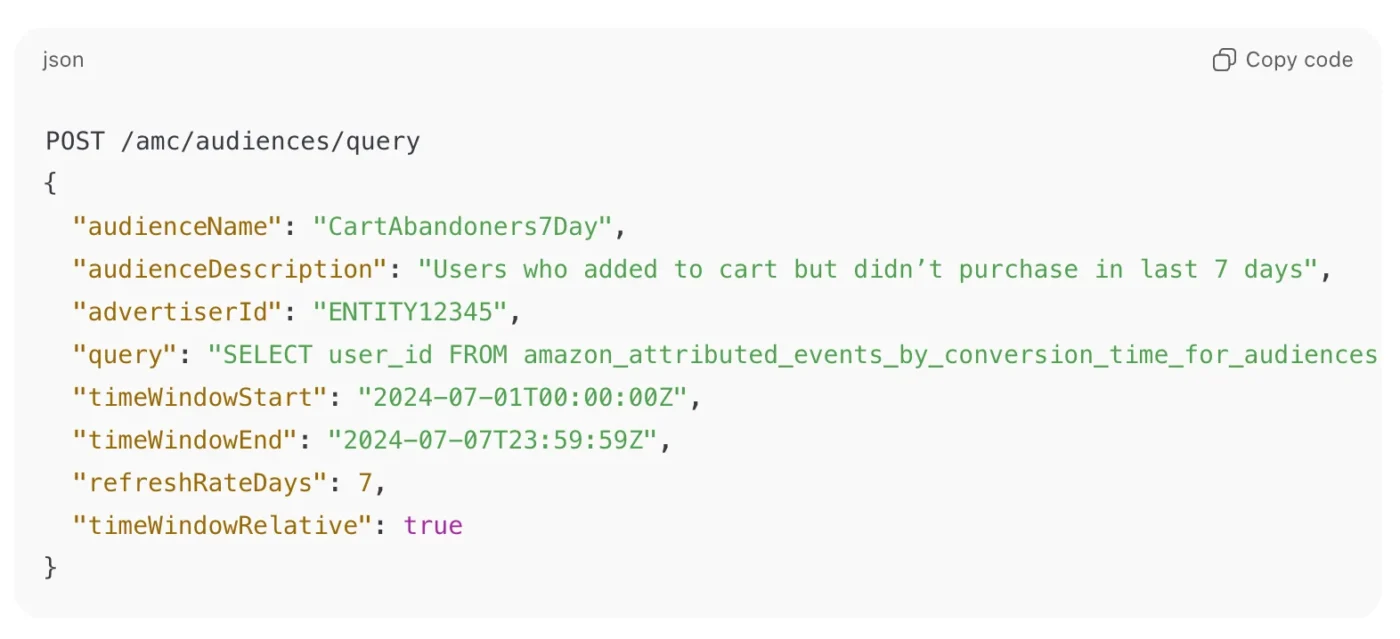
Key Parameters:
- audienceName → Unique name that shows up in DSP or Sponsored Ads
- advertiserId → Your DSP or Sponsored Ads entity ID
- query → The SQL you wrote
- refreshRateDays → How often AMC re-runs the query (daily, weekly, etc.)
- timeWindowRelative → Keeps the audience rolling forward (e.g., always looking at the last 7 days)
Step 5: Activate the Audience
After creation, your audience becomes available for targeting in Amazon DSP and Sponsored Ads.
Amazon DSP → Find your audience under Audiences → Custom-built → AMC. Use it like any other DSP audience for inclusion or exclusion.
Sponsored Ads:
- Sponsored Products (SP): Apply bid boosts so you bid more aggressively when a custom audience shopper enters the auction.
- Sponsored Brands (SB): Same bid boost option to ensure visibility with high-value shoppers.
- Sponsored Display (SD): Directly target AMC custom audiences within your display campaigns.
This flexibility allows you to align audiences to different funnel stages—retargeting with DSP, boosting bids for high-value segments in SP/SB, or prospecting with SD.
Step 6: Refresh & Maintenance
Audiences aren’t static. Shopper behavior changes daily, so you’ll want your queries to refresh regularly.
- refreshRateDays controls how often AMC re-runs your query. Daily refresh is common for active segments, while weekly may suffice for broader audiences.
- Rolling lookback windows (using timeWindowRelative = true) ensure your audience always reflects the most recent behavior, like “cart abandoners in the last 7 days.”
Best practice: Monitor performance weekly and prune underperforming audiences to keep your targeting efficient.
With this workflow, you’ve taken raw data signals, shaped them into a precise audience, and activated them in your campaigns. This is the heart of AMC custom audiences: transforming insight into actionable targeting.
Where to Use AMC Custom Audiences
Building a custom audience is just the beginning; the real impact comes when you activate it across Amazon’s ad products. AMC audiences can now be used in Amazon DSP and across all Sponsored Ads formats, including direct targeting in Sponsored Products. This means you can align custom segments to every stage of the funnel, from awareness to conversion.
Amazon DSP: Precision Retargeting and Prospecting
In DSP, AMC audiences appear under Custom-built → AMC in your audience library. You can use them for:
- Retargeting: Serve ads to cart abandoners or product detail page viewers.
- Cross-sell: Show complementary products to existing buyers.
- Exclusions: Prevent overspending by excluding current customers from prospecting campaigns.
Because DSP supports display, video, and OTT placements, AMC audiences help you extend precision targeting beyond Amazon’s marketplace.
Sponsored Display: Direct Audience Targeting
Sponsored Display allows you to directly target AMC audiences across Amazon, mobile apps, and third-party sites. This makes it one of the most versatile placements for re-engagement and loyalty campaigns.
Example use cases:
- Target high-value percentile buyers with ads for your premium product line.
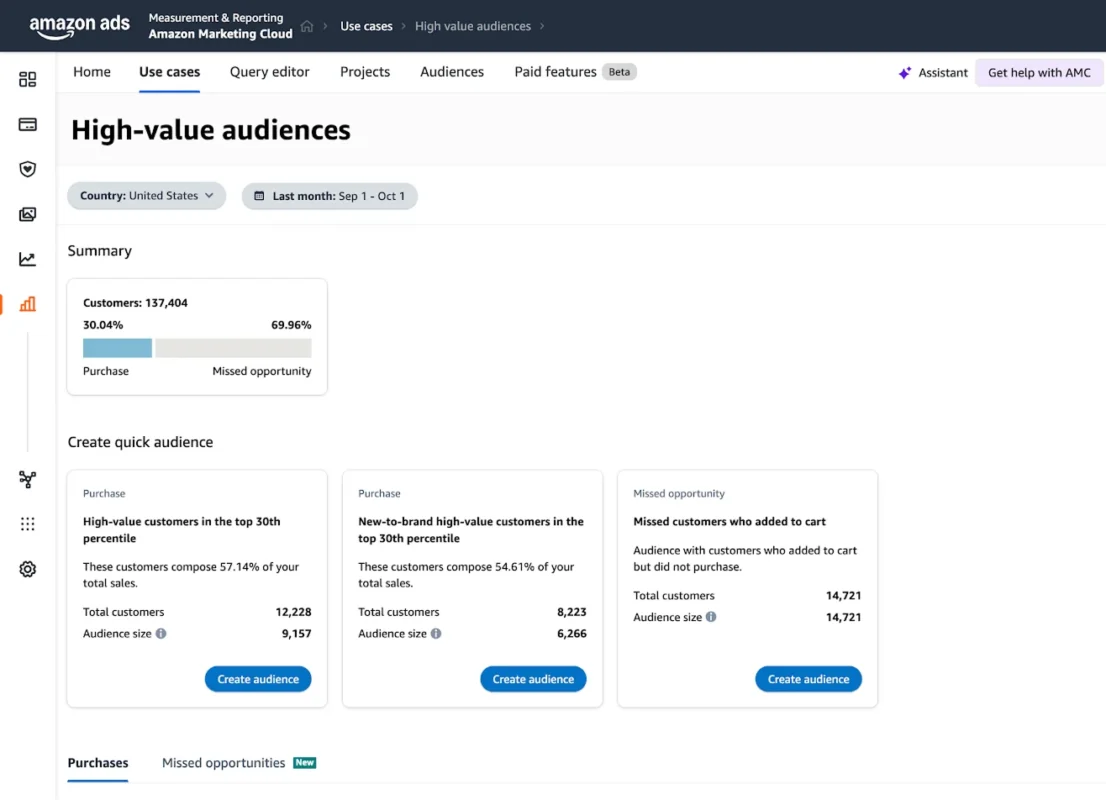
- Re-engage tentpole-event shoppers (e.g., Prime Day browsers) to drive delayed conversions.
Sponsored Products: Now with Direct Audience Targeting
Sponsored Products has evolved beyond keyword and ASIN-based targeting. You can now directly target AMC custom audiences in SP campaigns, unlocking a whole new layer of precision.
This is a major shift:
- Cart abandoners → Run Sponsored Products campaigns that push them back to checkout.
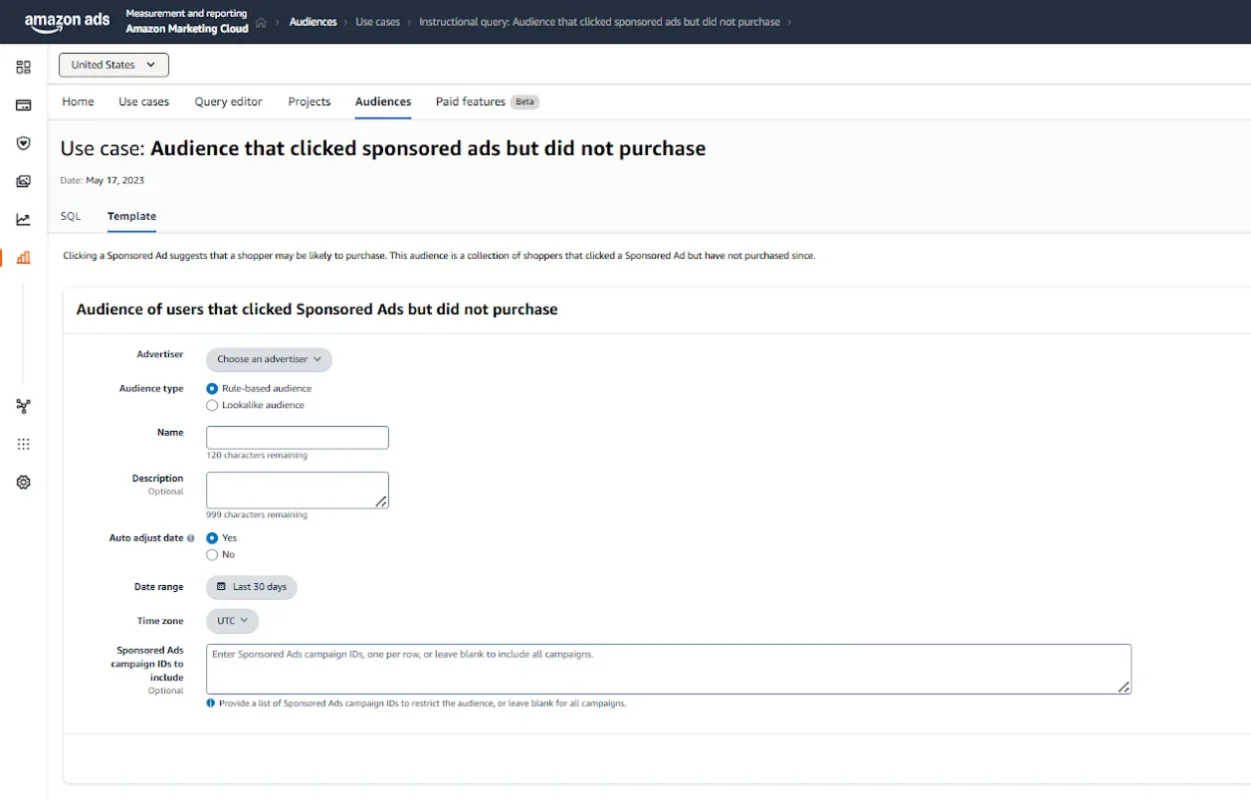
- Repeat buyers → Highlight Subscribe & Save offers to increase lifetime value.
- Lookalikes → Scale reach to audiences modeled on your top 5% of spenders.
Direct audience targeting in Sponsored Products combines AMC’s behavioral segmentation with Amazon’s most conversion-driven ad format—delivering both reach and efficiency.
Sponsored Brands: Audience-Informed Awareness
Sponsored Brands campaigns also support AMC audiences, letting you feature your storefront or brand message in front of high-value segments.
Great fits include:
- Promoting new product launches to your best customers.
- Reinforcing brand presence with Prime Video watchers who already show category interest.
This allows you to connect brand storytelling with performance-driven targeting.
Choosing the Right Fit
Not every AMC custom audience should be activated in the same way. The power of AMC is that it gives you flexibility: you can choose the right ad format for the right audience depending on your goals such as conversion, loyalty, or awareness. Here’s how to think about it.
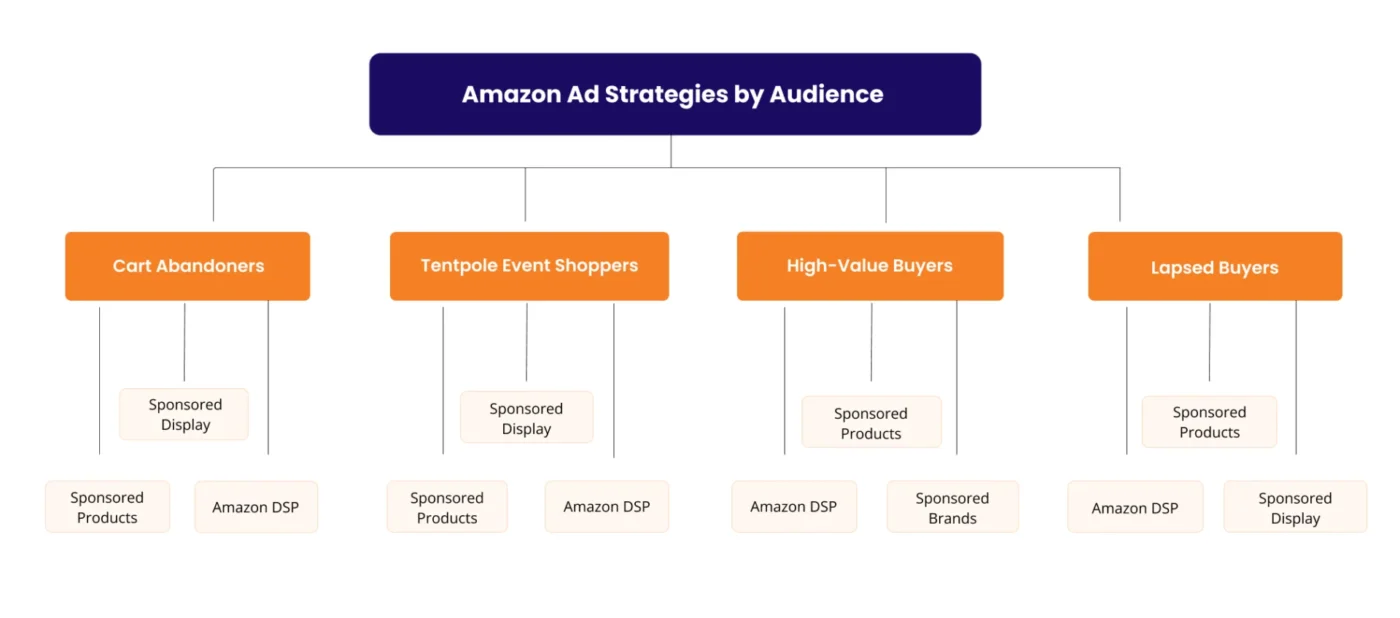
Cart Abandoners → Close the Sale
- Sponsored Products (Direct Targeting): Put your product front and center when a cart abandoner returns to Amazon. SP’s placement on search results and product pages makes it perfect for nudging them back to checkout.
- Sponsored Display: Follow up with display ads on Amazon or third-party sites to remind them of what they left behind. Add urgency with limited-time messaging.
- Amazon DSP: Retarget cart abandoners with more creative flexibility (video, OTT) to push them back into the funnel.
Why it works: Cart abandoners are warm leads because you don’t need to introduce your product, you just need to push them over the finish line.
High-Value Buyers → Grow Lifetime Value
- Sponsored Products (Upsell): Highlight premium versions, bundles, or Subscribe & Save options when your best customers shop again.
- Sponsored Display (Loyalty): Run loyalty-focused campaigns promoting complementary products or exclusive offers.
- Amazon DSP (Lookalikes): Use your top 5% spenders as a seed audience to find more shoppers who behave like them.
Why it works: High-value buyers already trust your brand. By upselling, cross-selling, and expanding through lookalikes, you maximize both revenue per customer and reach.
Tentpole Event Shoppers → Extend the Buzz
- Sponsored Products: Retarget Prime Day or Cyber Monday browsers with follow-up promotions, even after the event ends.
- Sponsored Brands: Showcase your storefront with seasonal collections or post-event deals to keep the momentum going.
- Amazon DSP: Reach them across devices and placements with tailored creatives tied to the event theme.
Why it works: Tentpole-event shoppers show strong intent in short bursts. By re-engaging them, you turn one-off browsing into sustained brand interest.
Lapsed Buyers → Win Them Back
- Sponsored Display: Deliver win-back campaigns with targeted discounts or “We miss you” messaging to buyers who haven’t purchased recently.
- Amazon DSP: Use multi-channel reminders—display, video, or OTT ads—to reintroduce your brand and spark interest again.
- Sponsored Products: If they’re back on Amazon searching in your category, direct targeting ensures you’re the brand they see first.
Why it works: Lapsed buyers are familiar with you but disengaged. The right mix of reminders and incentives can bring them back into your funnel before they defect to competitors.
The Big Picture
AMC audiences aren’t just technical segments, they’re strategic levers you can pull across Amazon’s ecosystem:
- Sponsored Products for conversion-focused nudges
- Sponsored Display for loyalty, retargeting, and cross-sell
- Sponsored Brands for awareness and brand storytelling
- Amazon DSP for full-funnel reach and prospecting
By aligning audience type with campaign objective, you get the best of both worlds: efficient spend and maximum impact. The bottom line? AMC audiences are no longer siloed, they’re a versatile asset that gives you unmatched control over who sees your ads, when, and where.
Practical Applications & Use Cases
So far, we’ve covered the “what” and “how” of AMC custom audiences. Now let’s bring it to life with real-world scenarios you can apply right away. These are some of the most common and most profitable ways brands are using AMC audiences to drive performance.
1. Cart Abandoner Recovery
The Challenge: Shoppers add items to their cart but never check out, leaving revenue on the table.
The Audience:

Activation:
- Sponsored Products (direct targeting): Push the exact product back in front of them.
- Sponsored Display: Deliver reminder ads with urgency-based creative (“Still in your cart”).
- DSP: Retarget across OTT and display for broader reach.
Goal: Increase checkout completions, reduce cart abandonment rate.
Metric to Watch: Conversion rate lift vs. non-targeted cart abandoners.
2. High-Value Buyer Upsell
The Challenge: Not all customers are equal. Your top 10% often drive the bulk of sales.
The Audience:
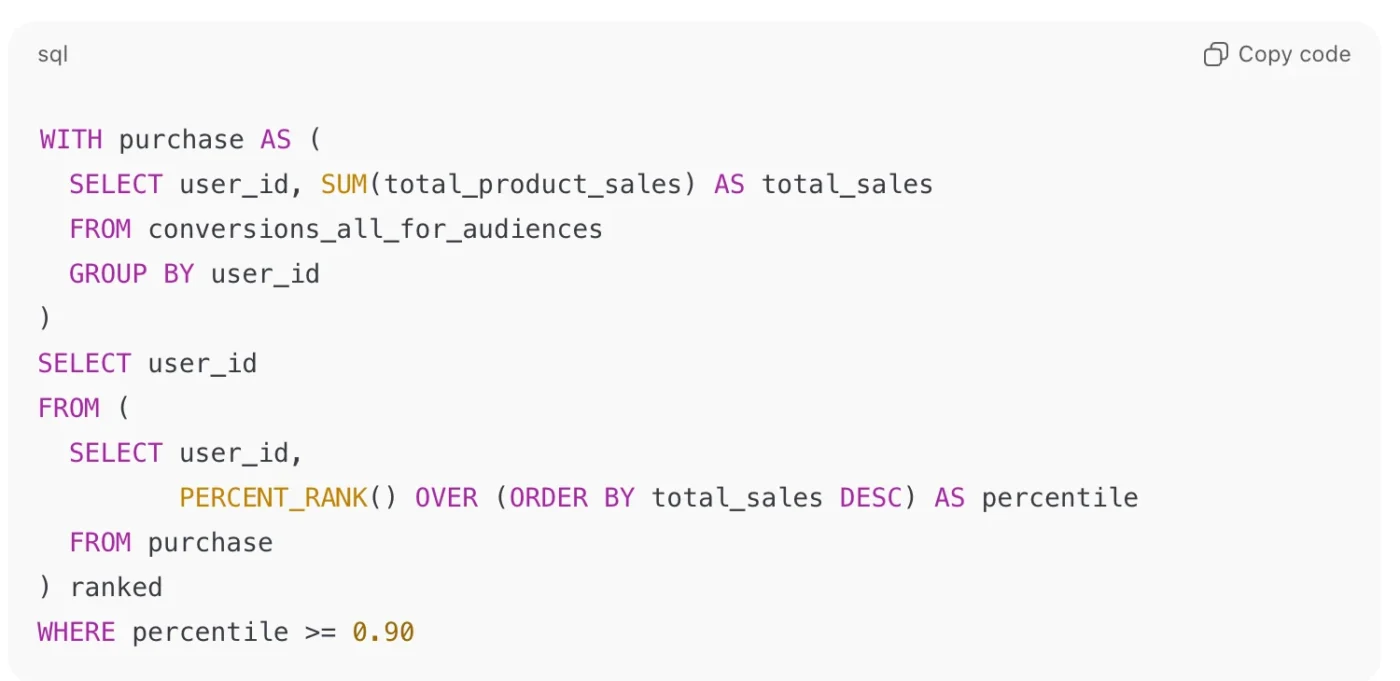
Activation:
- Sponsored Products: Target with bundles or Subscribe & Save offers.
- Sponsored Display: Promote premium product lines or loyalty rewards.
- DSP: Build lookalikes to scale beyond current high-value buyers.
Goal: Boost AOV (average order value) and LTV (lifetime value).
Metric to Watch: Repeat purchase rate, ROAS on premium SKUs.
3. Tentpole Event Shoppers
The Challenge: Events like Prime Day bring huge spikes in traffic—but many browsers don’t convert.
The Audience: Shoppers active during a specific window (e.g., Prime Day).

Activation:
- Sponsored Products: Retarget with post-event deals.
- Sponsored Brands: Showcase a curated storefront collection (“Top Deals Extended”).
- DSP: Run reminder ads to maintain visibility after the event hype fades.
Goal: Convert event browsers into long-term customers.
Metric to Watch: Incremental sales post-event vs. baseline.
4. Lapsed Buyer Win-Back
The Challenge: Former customers stop purchasing, and new-customer acquisition is expensive.
The Audience: Buyers who haven’t purchased in 90+ days.

Activation:
- Sponsored Display: Serve loyalty-focused ads with win-back offers.
- DSP: Run OTT or display campaigns to reintroduce the brand.
- Sponsored Products: If they’re still searching in your category, make sure your product shows first.
Goal: Reduce churn and increase repeat purchase rate.
Metric to Watch: Win-back conversion rate.
5. Prime Video Audience Expansion
The Challenge: Video ads build awareness, but connecting that to conversion is tough.
The Audience: Shoppers who engaged with your Prime Video ads.
Activation:
- DSP: Retarget across devices with complementary creatives.
- Sponsored Products & Brands: Show product ads once awareness is built through video.
Goal: Bridge the gap between upper-funnel video engagement and lower-funnel conversion.
Metric to Watch: Incremental ROAS from video-exposed audiences.
Key Takeaway
Each of these use cases follows the same logic:
- Identify a behavior that matters.
- Translate it into a custom audience query.
- Deploy the audience into the right ad format.
- Measure the impact and optimize.
The flexibility of AMC means you can customize these blueprints to fit your exact business needs. Whether it’s saving lost sales, maximizing high-value buyers, or capitalizing on seasonal events, AMC custom audiences let you target smarter, not broader.
Advanced Optimization: Persona Builder & Overlap Analysis
Once you’ve built and activated your AMC custom audiences, the next challenge isn’t just reaching them, it’s optimizing them. Not all audiences are created equal, and some segments will overlap with others in ways that drive wasted spend or missed opportunities. This is where Persona Builder and Overlap Analysis come into play.
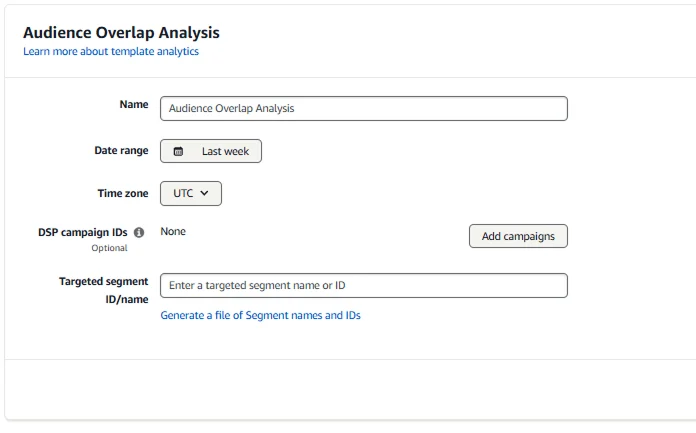
Together, they help you:
- Understand the characteristics of your audiences (demographics, categories, behaviors).
- Measure how much overlap exists between them.
- Decide which segments to prioritize, combine, or exclude for maximum efficiency.
Why Overlap Analysis Matters (The Critical Part)
Without overlap analysis, advertisers risk double-paying for the same shopper. For example:
- You might target a “Cart Abandoner” audience in one campaign, and a “Prime Day Browser” audience in another. If the same shopper qualifies for both, they’ll see multiple ads, potentially driving up frequency without adding incremental conversions.
- Or, your “High-Value Buyers” lookalike might significantly overlap with your “Lapsed Buyers” segment, causing you to waste budget competing against yourself.
Overlap analysis solves this problem by showing you the percentage of shared users between audiences, plus an affinity score that quantifies how likely a shopper is to belong to both groups.
This is the single most critical optimization lever: it lets you focus spend on incremental reach rather than redundant impressions.
How Persona Builder Enriches AMC Audiences
AMC on its own gives you behavioral segments (who clicked, who purchased, who abandoned). Persona Builder adds another layer: who these people are.
With Persona Builder, you can enrich AMC audiences with:
- Demographics (age ranges, gender distribution, household composition)
- Retail Category Interests (fitness gear, home décor, pet products, etc.)
- Prime Video Preferences (genres, actors, series)
- Affinity Scores (how strongly this audience relates to a category vs. the average Amazon shopper)
- Percentage Scores (what share of your audience matches the trait)
This context helps you not only understand your audience but also identify new opportunities: for example, your “Cart Abandoners” might skew heavily toward young families interested in home organization—data you wouldn’t see in raw AMC alone.
Step-by-Step: Running Overlap Analysis
- Start with a Base AMC Audience
Example: “High-Value Buyers (Top 10% by spend)” - Extract Canonical IDs
Use AMC’s audience discovery API to export the unique identifiers for your custom audience. - Feed into Persona Builder API
Query Persona Builder with those IDs to retrieve demographics, affinities, and overlaps. - Identify Overlapping Audiences
Look for segments that intersect heavily with your base audience.
Example output:- 40% overlap with “Fitness Enthusiasts”
- 22% overlap with “Pet Product Buyers”
- 15% overlap with “Prime Video Comedy Viewers”
- Interpret Affinity & Percentage Scores
- Affinity tells you strength of connection. (An affinity score of 5 means they’re 5x more likely than average to belong to that category.)
- Percentage tells you size of overlap. (A 22% overlap with pet buyers means nearly a quarter of your high-value buyers are also pet owners.)
- Affinity tells you strength of connection. (An affinity score of 5 means they’re 5x more likely than average to belong to that category.)
- Take Action
- Expand: Use overlaps with high affinity + high percentage to create new targeting pools (e.g., cross-sell to pet buyers).
- Exclude: Where overlap is high but incremental value is low, set exclusions to avoid wasted impressions.
- Differentiate Messaging: Tailor creatives by audience trait (e.g., family-oriented messaging for young parents vs. fitness-focused creatives for athletes).
Example: Overlap in Action
Let’s say you’re a brand selling premium coffee.
Base AMC Audience: Top 10% of buyers by spend.
Persona Builder Analysis Shows:
- 35% overlap with “Gourmet Food Enthusiasts” (Affinity 4.5)
- 20% overlap with “Prime Video Documentary Viewers” (Affinity 3.2)
- 10% overlap with “Pet Product Buyers” (Affinity 1.1)
Interpretation:
- The gourmet food overlap is both large and high-affinity → Expand into that category with bundled offers.
- The documentary viewers overlap suggests a lifestyle affinity → Test creative with “crafted, artisanal” messaging.
- The pet product overlap is weak and small → Not worth targeting or budgeting heavily.
By running this analysis, you’ve avoided chasing low-value overlaps and instead doubled down on affinities that drive ROI.
Best Practices for Overlap Analysis
- Always measure overlap before launching multiple AMC audiences to avoid cannibalization.
- Use exclusions strategically. Don’t just expand; prune overlapping segments that don’t add incremental reach.
- Refresh overlap analysis quarterly as audience behavior shifts (e.g., seasonality, new product launches), affinities will evolve.
- Pair overlap with campaign KPIs because sometimes an overlap looks large, but doesn’t translate into sales. Measure ROI, not just size.
Troubleshooting & Common Pitfalls
Even with a well-written query and clear use case, AMC custom audiences don’t always cooperate. Audiences may fail to build, end up smaller than expected, or perform poorly once activated. Understanding the common pitfalls will save you hours of frustration and wasted spend.
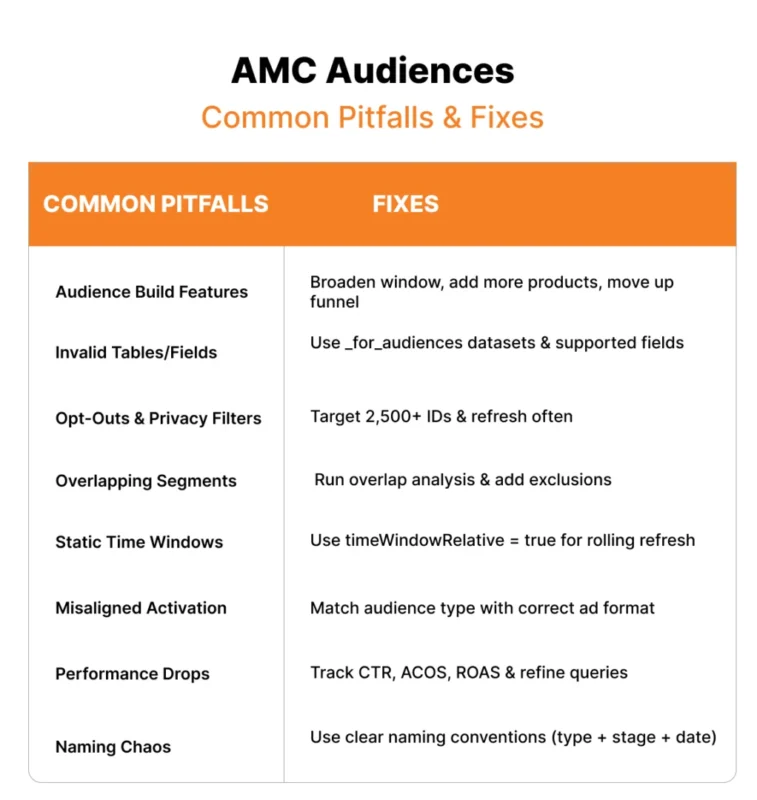
The Most Critical Pitfall: Audience Build Failures
The number one issue advertisers face is a failed or incomplete audience build—and it almost always comes down to one of three factors:
- Minimum Size Threshold Not Met
- Rule-based audiences require at least 2,000 unique user IDs to build successfully.
- Lookalike audiences require at least 500 users in the seed.
- If you’re too narrow in your filters (e.g., “cart abandoners in the last 3 days for one ASIN”), you risk falling below these thresholds.
Fix:
- Broaden your lookback window (7 → 30 days).
- Include more products in your query (entire category vs. one SKU).
- Move up the funnel (detail page views instead of only add-to-cart).
- Invalid Tables or Fields in Queries
- AMC has separate audience-specific tables (e.g., amazon_attributed_events_by_conversion_time_for_audiences) that must be used for audience queries. If you reference a standard measurement table instead, your query will fail.
- Some sensitive ASINs are also stripped from queries and cannot be used to build audiences.
Fix:
- Always confirm you’re querying the _for_audiences dataset.
- Cross-check the AMC documentation for supported tables.
- Opt-Outs & Privacy Filters
- Even if your query returns >2,000 users, Amazon will strip out IDs for shoppers who opted out of targeting, as well as under-18 profiles.
- This can shrink an audience to below threshold after ingestion.
Fix:
- Target slightly larger than 2,500 IDs in your initial query to allow for opt-out filtering.
- Refresh frequently to keep audiences above the cutoff.
Why this is critical: If your audience build fails, you don’t just lose time—you lose your ability to activate campaigns altogether. Without a valid audience, DSP and Sponsored Ads won’t even see the segment. Getting the size and query structure right upfront is the most important troubleshooting skill for AMC custom audiences.
Other Common Pitfalls & How to Fix Them
1. Overlapping Segments (Cannibalization)
- The Problem: Running multiple campaigns that target heavily overlapping audiences leads to budget cannibalization and ad fatigue.
Fix: Run overlap analysis with Persona Builder to measure redundancy, then apply exclusions to separate segments cleanly.
Static Time Windows (Audience Staleness)
- The Problem: If you don’t set timeWindowRelative = true, your audience doesn’t roll forward. After 30 days, it goes stale and stops refreshing.
Fix: Always use relative windows for active audiences (e.g., “last 7 days”) unless you intentionally want a fixed-time cohort (e.g., Prime Day).
Misaligned Activation Strategy
- The Problem: Using the wrong ad format for the wrong audience. Example: pushing a broad lookalike into Sponsored Products (better suited for DSP).
Fix: Map each audience type to the correct activation method (see Section 6).
Performance Drops After Launch
- The Problem: Some audiences look great on paper but don’t deliver in practice.
Fix: Monitor CTR, ACOS, and ROAS at the audience level. If results lag, refine queries (e.g., filter by recency or value).
Naming & Tracking Chaos
- The Problem: Without consistent naming, you’ll quickly lose track of which audience is which especially as refresh cycles generate duplicates.
Fix: Adopt a naming convention that includes audience type, funnel stage, and date (e.g., CartAbandoners_7D_SP_2025Q1).
Best Practices & Decision Frameworks
By now, you’ve seen how to build, activate, and troubleshoot AMC custom audiences. But here’s the truth: even a perfectly crafted audience can flop if you don’t use it in the right way. The most common mistake advertisers make is treating all audiences the same and pushing them into any available campaign without thinking about their intent or funnel stage.
The key to success lies in a decision framework: knowing which audience type belongs to which ad format and funnel objective. Get this right, and AMC becomes a growth engine. Get it wrong, and you risk wasted spend, misaligned messaging, and underwhelming results.
The Most Critical Best Practice: Match Audience Type to Campaign Objective
Here’s the golden rule: don’t just ask “who is in my audience?”
Ask “what am I trying to achieve with them?”
For example:
- A cart abandoner audience is high intent → They belong in conversion-focused campaigns (Sponsored Products, Sponsored Display, DSP retargeting).
- A lookalike of high-value buyers is mid-funnel → They’re ideal for prospecting with DSP, not a win-back campaign.
- Lapsed buyers are low-engagement → They need reactivation strategies (win-back offers, loyalty messages) instead of broad awareness ads.
Without this alignment, you risk showing awareness ads to ready-to-buy shoppers or hard-selling to audiences that aren’t primed.
A Practical Decision Framework
Think of it as a funnel-alignment chart for AMC audiences:
| Audience Type | Funnel Stage | Best Ad Formats | Campaign Objective |
| Cart Abandoners | Bottom of Funnel | Sponsored Products (direct), Sponsored Display, DSP retargeting | Close the sale / recover revenue |
| High-Value Buyers | Mid-Bottom Funnel | Sponsored Products (upsell), Sponsored Display (loyalty), DSP lookalikes | Increase LTV / expand premium sales |
| Tentpole Event Shoppers | Mid-Funnel | Sponsored Products, Sponsored Brands, DSP | Extend event momentum / convert browsers |
| Lapsed Buyers | Mid-Top Funnel | Sponsored Display (win-back), DSP (multi-channel), Sponsored Products (if active in category again) | Reactivate churned customers |
| Lookalikes | Top-Mid Funnel | DSP primarily, Sponsored Display secondarily | Prospecting / scale new customer acquisition |
This framework helps you avoid mismatches like using Sponsored Products (a conversion tool) for a cold lookalike audience.
Additional Best Practices to Maximize AMC Custom Audiences
- Start Broad, Then Refine: Begin with larger windows (30 days, all SKUs), then test narrowing down once you confirm scale.
- Use Exclusions Intelligently: Exclude existing customers when prospecting; exclude repeat buyers when running acquisition campaigns.
- Refresh Cadence Matters: Rolling 7–30 day windows for high-intent audiences; quarterly refreshes for stable cohorts (like high-value buyers).
- Adopt Naming Conventions: Example: CartAbandoners_7D_SP_Q1_2025. This saves confusion when audiences refresh or multiply.
- Tie Audiences to KPIs: Don’t measure all audiences by the same yardstick. For example, a lookalike prospecting campaign shouldn’t be judged on the same ACOS as a cart-abandoner retargeting campaign.
What’s Next for AMC Custom Audiences
AMC custom audiences are still relatively new compared to traditional Amazon targeting options, but they’re evolving fast. What began as an advanced DSP-only tool is quickly becoming a cornerstone of how brands manage precision targeting across the Amazon ecosystem. Looking ahead, there are three big trends shaping the future of AMC audiences.

Expanding Sponsored Ads Integration
When AMC audiences first launched, they were primarily a DSP feature. Then came Sponsored Display. Then bid boosts in Sponsored Products and Sponsored Brands. Now, we’ve reached the point where direct audience targeting is available across all three Sponsored Ads formats.
This is a game-changer for one reason: Sponsored Ads are Amazon’s highest-volume, most conversion-driven placements. Unlike DSP, which can be more expensive and upper-funnel, Sponsored Products and Sponsored Brands sit at the heart of purchase intent, right on search results and product pages.
Here’s why this expansion is critical:
- It democratizes AMC audiences. Even advertisers without DSP access can now activate custom audiences directly in Sponsored Ads.
- It connects insight to action in real time. The same cart-abandoner audience you build in AMC can fuel retargeting inside Sponsored Products the next day.
- It closes the loop across the funnel. DSP builds awareness, Sponsored Ads close the sale and AMC is now the connective tissue between the two.
For advertisers, this means AMC audiences are no longer a “nice to have” advanced feature. They’re becoming the default way to target across Amazon. If you’re not using them, you’re behind.
AI-Assisted Query Building
Amazon is experimenting with ways to make AMC more accessible. Today, writing SQL queries is still a barrier for many advertisers. But with the rise of AI-powered query assistants, expect to see:
- Natural-language prompts that generate SQL automatically
- Prebuilt “audience recipes” for common segments (cart abandoners, lapsed buyers, high-value percentile shoppers)
- Automated suggestions based on your campaign history
This shift will lower the technical barrier and expand AMC adoption to smaller brands and agencies.
Omnichannel Targeting & Attribution
Another big frontier is taking AMC audiences beyond Amazon. With integrations into DSP, streaming (Prime Video), and even third-party inventory, advertisers will be able to:
- Retarget the same custom audience across devices (mobile, CTV, desktop)
- Connect AMC audiences with retail media networks outside Amazon
- Measure performance across multiple channels in a unified dashboard
This evolution positions AMC as not just an Amazon-specific tool, but as a broader customer data platform (CDP)-style solution for advertisers.
Conclusion
Amazon Marketing Cloud custom audiences represent one of the biggest shifts in how brands can approach targeting on Amazon, not just reaching shoppers, but doing so with precision and intent. The most important lesson is to start small rather than trying to build and activate multiple audiences at once. Begin with a single use case, like “cart abandoners in the last 7 days,” and test it in one format, such as Sponsored Products or Sponsored Display. Measure the impact against your existing baseline campaigns; did you reduce wasted spend, did conversions improve, did ROI become clearer?
Once you have proof of performance, expand into additional audiences like high-value buyers, repeat shoppers, or lookalikes, and bring in advanced tools such as Persona Builder or overlap analysis. This crawl-walk-run approach ensures you build a repeatable framework that scales, instead of getting lost in complexity. If you still stuck with any confusions, book a free consultation call now and get them answered straightaway.

